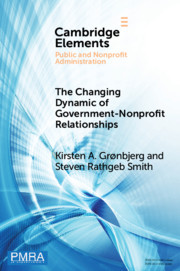20 results
8 - Welfare, Rights, and the Market in the Post-Congress Polity, 1998–2014
- from Part III - Liberalisation and Welfare in a Multi-level Democracy
-
- Book:
- Making India Work
- Published online:
- 13 February 2025
- Print publication:
- 13 February 2025, pp 173-192
-
- Chapter
- Export citation
Formal and informal institutions: some problems of meaning, impact, and interaction
-
- Journal:
- Journal of Institutional Economics / Volume 21 / 2025
- Published online by Cambridge University Press:
- 10 February 2025, e1
-
- Article
-
- You have access
- Open access
- HTML
- Export citation
Development, validity and reliability of the street food and beverage tool
-
- Journal:
- Public Health Nutrition / Volume 28 / Issue 1 / 2025
- Published online by Cambridge University Press:
- 13 January 2025, e45
-
- Article
-
- You have access
- Open access
- HTML
- Export citation
Do public-sector employment reductions promote the informal economy?
-
- Journal:
- Journal of Institutional Economics / Volume 20 / 2024
- Published online by Cambridge University Press:
- 17 December 2024, e42
-
- Article
-
- You have access
- Open access
- HTML
- Export citation
3 - Crude Portrayals, Crude Proposals
- from Part I - Positioning E-Waste Hubs
-
- Book:
- Polluted Politics
- Published online:
- 18 December 2024
- Print publication:
- 05 December 2024, pp 61-83
-
- Chapter
- Export citation
7 - The Challenge of Modernising the Economic Structure
- from Part III - Institutional Obstacles to Structural Transformation
-
- Book:
- Institutional Challenges at the Early Stages of Development
- Published online:
- 09 November 2023
- Print publication:
- 09 November 2023, pp 225-253
-
- Chapter
-
- You have access
- Open access
- HTML
- Export citation
Child labour in Pakistan: Addressing supply and demand side labour market dynamics
-
- Journal:
- The Economic and Labour Relations Review / Volume 28 / Issue 2 / June 2017
- Published online by Cambridge University Press:
- 01 January 2023, pp. 294-311
-
- Article
- Export citation
How vulnerable are small firms to energy price increases? Evidence from Mexico
-
- Journal:
- Environment and Development Economics / Volume 28 / Issue 1 / February 2023
- Published online by Cambridge University Press:
- 14 July 2022, pp. 89-109
-
- Article
-
- You have access
- Open access
- HTML
- Export citation
Conceptual Design in Metalworking Microenterprises: An Empirical Study in Tanzania
-
- Journal:
- Proceedings of the Design Society / Volume 2 / May 2022
- Published online by Cambridge University Press:
- 26 May 2022, pp. 2493-2502
-
- Article
-
- You have access
- Open access
- Export citation
Labor Informality and the Vote in Latin America: A Meta-analysis
-
- Journal:
- Latin American Politics and Society / Volume 64 / Issue 2 / May 2022
- Published online by Cambridge University Press:
- 25 April 2022, pp. 21-44
-
- Article
-
- You have access
- Open access
- HTML
- Export citation
Varieties of Economic Vulnerability: Evidence on Social Policy Preferences and Labor Informality from Mexico
-
- Journal:
- Latin American Politics and Society / Volume 64 / Issue 2 / May 2022
- Published online by Cambridge University Press:
- 25 April 2022, pp. 139-168
-
- Article
- Export citation

The Changing Dynamic of Government–Nonprofit Relationships
- Advancing the Field(s)
-
- Published online:
- 23 January 2021
- Print publication:
- 11 February 2021
-
- Element
- Export citation
6 - Economy, Socioeconomic Development, and Development Cooperation
-
- Book:
- Africa since Decolonization
- Published online:
- 07 January 2021
- Print publication:
- 21 January 2021, pp 116-141
-
- Chapter
- Export citation
3 - The Economy of Ghana and Tanzania
-
- Book:
- Innovation under the Radar
- Published online:
- 27 November 2020
- Print publication:
- 17 December 2020, pp 43-62
-
- Chapter
- Export citation
Opting for Exit: Informalization, Social Policy Discontent, and Lack of Good Governance
-
- Journal:
- Latin American Politics and Society / Volume 62 / Issue 2 / May 2020
- Published online by Cambridge University Press:
- 23 March 2020, pp. 1-28
-
- Article
- Export citation
Economic Vulnerability and Partisanship in Latin America
-
- Journal:
- Latin American Politics and Society / Volume 61 / Issue 3 / August 2019
- Published online by Cambridge University Press:
- 17 June 2019, pp. 80-103
-
- Article
- Export citation
The origins of informality: the ILO at the limit of the concept of unemployment
-
- Journal:
- Journal of Global History / Volume 14 / Issue 1 / March 2019
- Published online by Cambridge University Press:
- 14 February 2019, pp. 107-125
-
- Article
-
- You have access
- HTML
- Export citation
INFORMAL SECTOR MISALLOCATION
-
- Journal:
- Macroeconomic Dynamics / Volume 23 / Issue 8 / December 2019
- Published online by Cambridge University Press:
- 01 June 2018, pp. 3065-3098
-
- Article
- Export citation
INFORMAL ECONOMY IN A DYNAMIC POLITICAL FRAMEWORK
-
- Journal:
- Macroeconomic Dynamics / Volume 19 / Issue 3 / April 2015
- Published online by Cambridge University Press:
- 09 October 2013, pp. 578-617
-
- Article
- Export citation
OPTIMAL INFLATION TAX AND STRUCTURAL REFORM
-
- Journal:
- Macroeconomic Dynamics / Volume 7 / Issue 3 / June 2003
- Published online by Cambridge University Press:
- 25 March 2003, pp. 333-362
-
- Article
- Export citation

